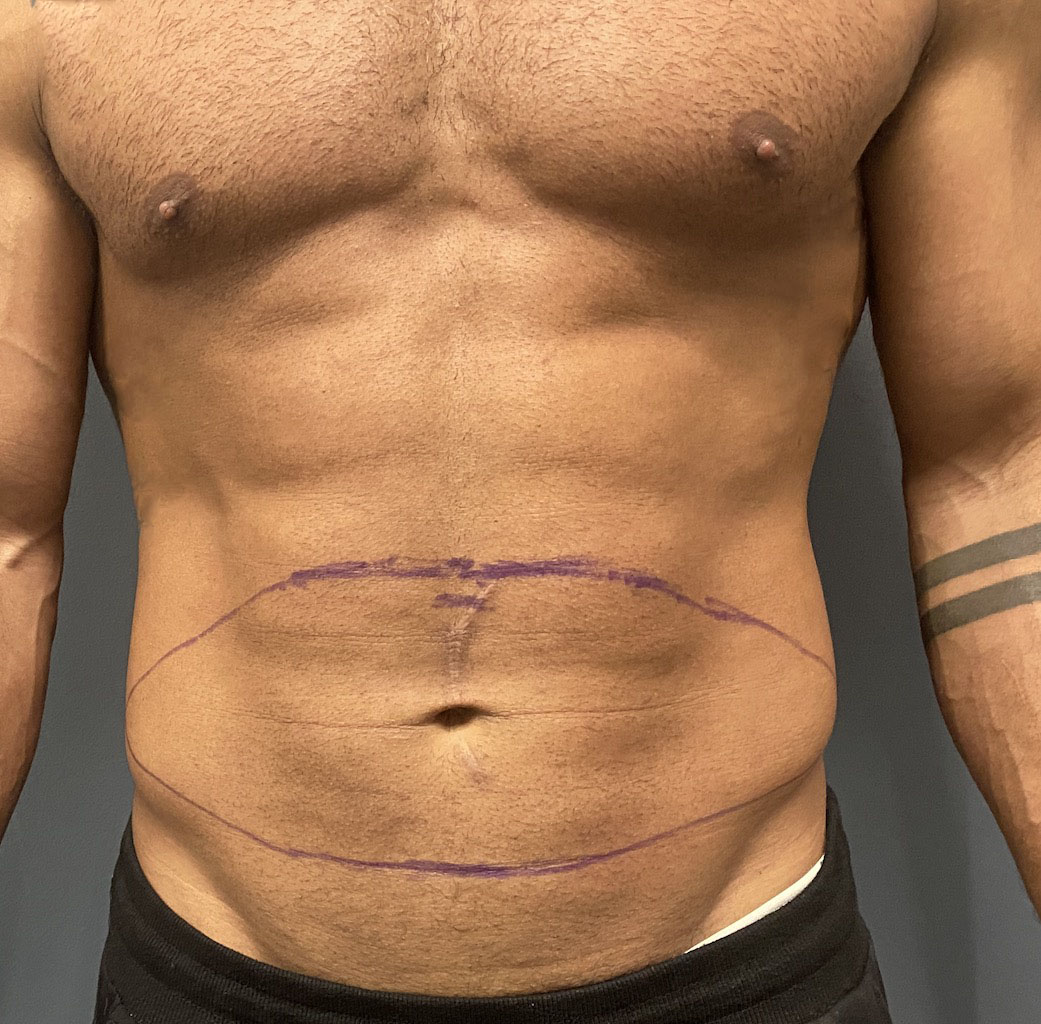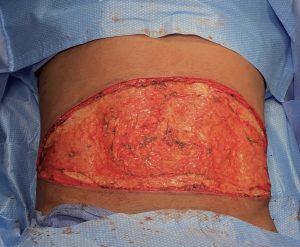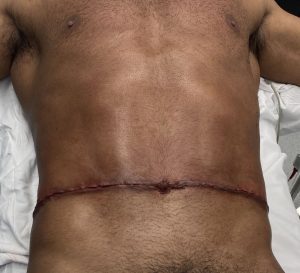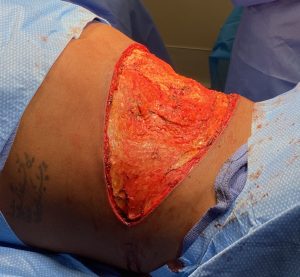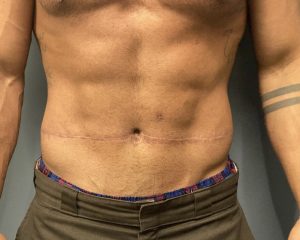Background: The tummy tuck procedure is one of the most well known body contouring procedures that has been around for almost a century. It is most commonly performed in women to remove excessive abdominal tissues and tighten loose abdominal muscles as a result of pregnancies and weight changes. There are a variety of different techniques to perform tummy tucks as well as different types of tummy tucks but they all are performed on patients with tissue excesses.
While men do undergo tummy tucks there are some technique differences from that of females. Most male tummy tucks do not include rectus muscle plication since men do not usually have loose rectus muscles. (since they do not get pregnant) The horizontal elliptical skin excision patterns may be similar based on how much loose skin is present with a resultant low scar location. Men tend to not need as frequently the need for umbilical transposition since their skin excesses are often less from the effects of weight loss and an infraumbilical excision may be adequate.
The rarest reason for requesting a tummy tuck is for loose skin that develops in the bent over position…but otherwise has taut abdominal skin when standing straight. This would typically be a contraindication for a tummy tuck as the skin is too tight remove much and a very tight closure would result in a high risk of adverse scarring.
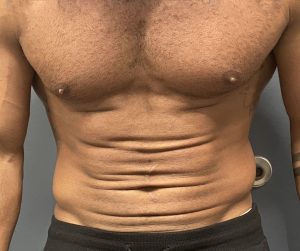

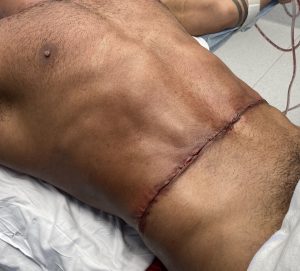
His postoperative course was complicated by the development of a seroma, which required a drain to resolve, and it took a considerable amount of time before he could stand straight comfortably.
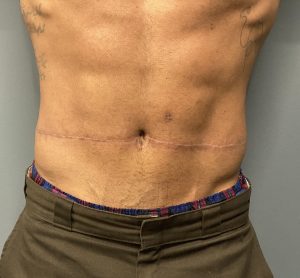
This is a type of tummy tuck that would be rarely performed in its location as well as the request to do so. The patient did have a history of weight loss before he became so fit which suggested that the abdominal skin was not quite as tight as it would be if the weight loss had not occurred. But the primary reason this scar line turned out as good as it did was its location. Placed across the horizontal umbilical line this is the area of the abdomen that is exposed to the least stretch in both the bent over and upright position. The reason it is not used in traditional tummy tucks is that it is the most visible location….of which this patient had no concerns about scar visibility. (a rare lack of concern)
Case Highlights:
1) Tummy tucks are traditionally done in men for excessive abdominal as a result of weight loss not for excessive skin wrinkling in the bent over position.
2) In the abdomen with no significant laxity an effort at excision must be oriented along the umbilical line.
3) The long term scar result from this mid-abdominal tuck was far better than expected.
Dr. Barry Eppley
World-Renowned Plastic Surgeon

